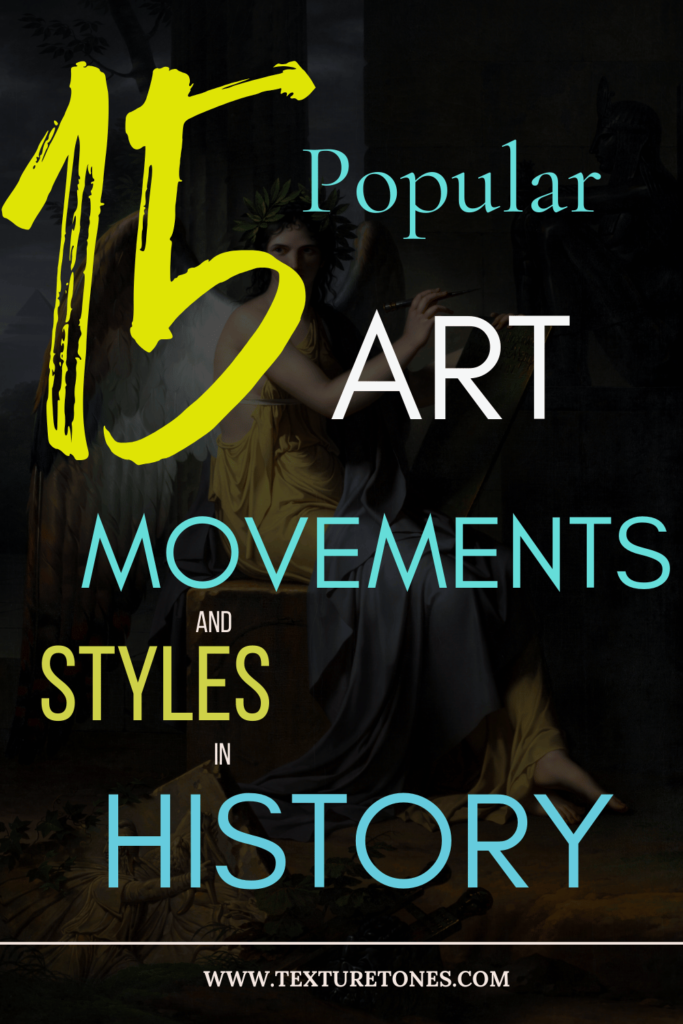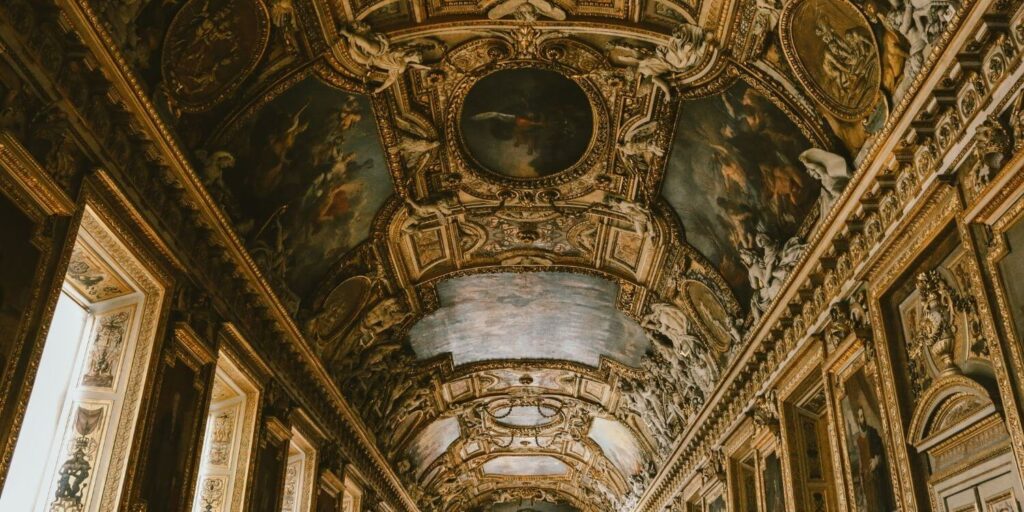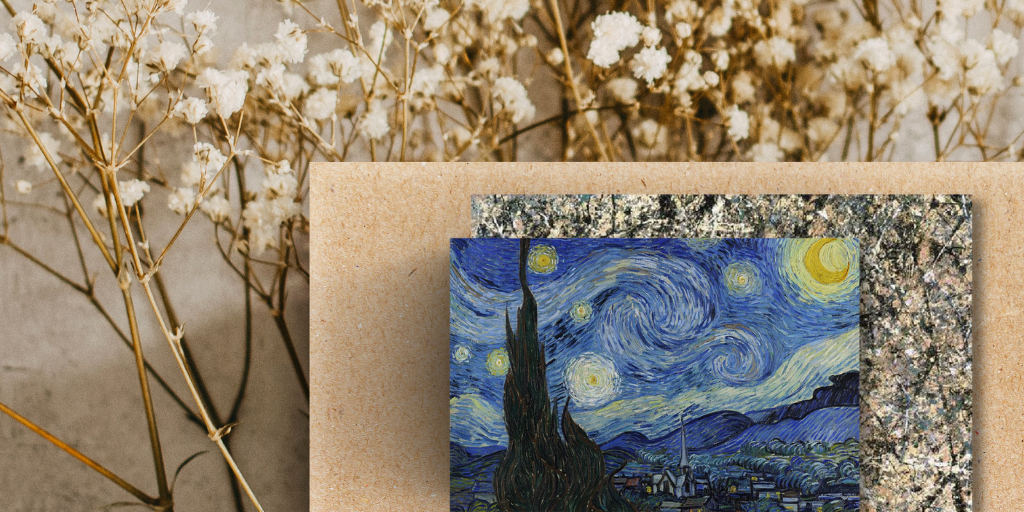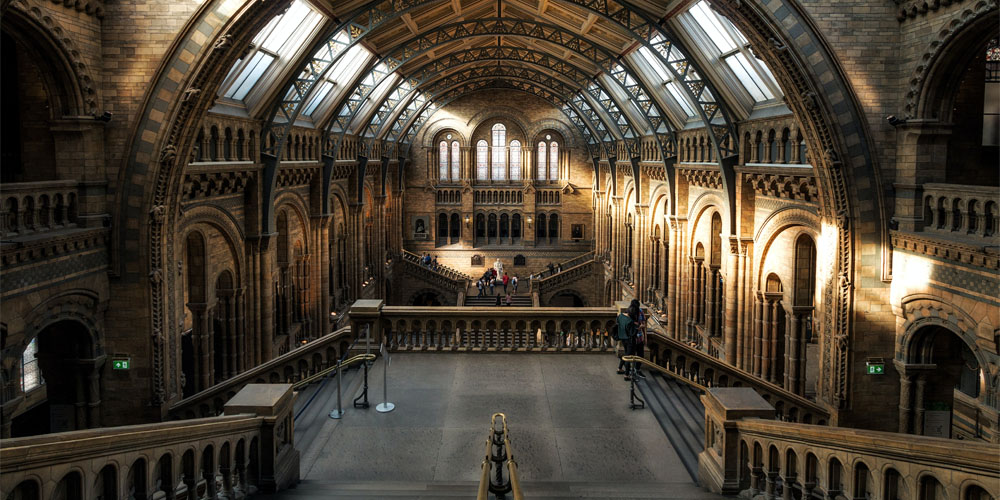
Have you ever wondered why some paintings look so different from others?
Why does one artwork have soft, delicate brushstrokes while another is full of bold shapes and colors? That’s because artists throughout history have created and followed different art movements, each with its own unique style and purpose.
Understanding these movements can help you see paintings in a whole new way—whether it’s the elegant curves of Art Nouveau, the dramatic lighting of Baroque, or the abstract energy of Cubism.
In this post, we’ll take a quick look at 15 important art movements, what makes them special, and the famous artists behind them.
What is an Art Movement?
When a group of artists share the same style and philosophy and have a common concept or objective this is considered a movement. In order to appreciate art, it is crucial to understand the intentions behind these paintings.
In this post, lets briefly understand what each movement means and its importance in history.
1. Classicism
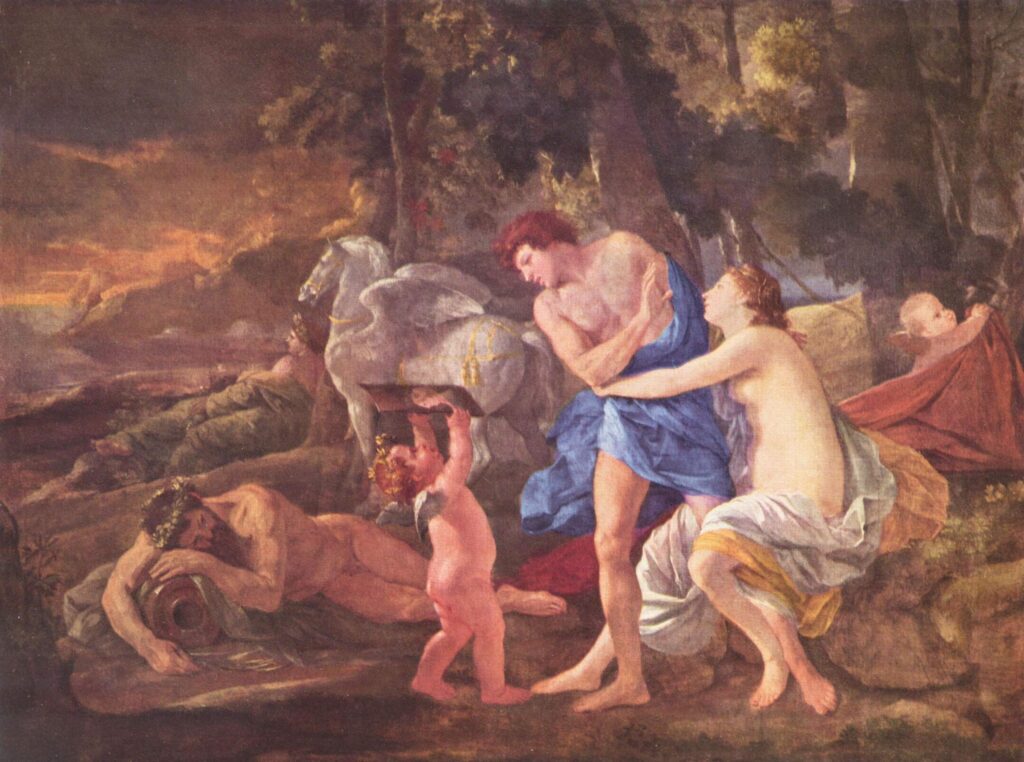
Cephalus and Aurora by Nicolas Poussin, 1630
The terms classic or classical is a term used to describe the arts and culture of the ancient civilizations of Greece and Rome in the seventeenth century.
Artists began to emulate classical art in form, symmetry, balance, and an overall sense of order. Classicism can apply to painting, sculpture, architecture, music, dance, literature, or philosophy. Some of the Leading artists of Classicism are Nicolas Poussin, Lauren de La Hyre, John Flaxman, Charles Le Brun, Heinrich Füger.
2. Baroque
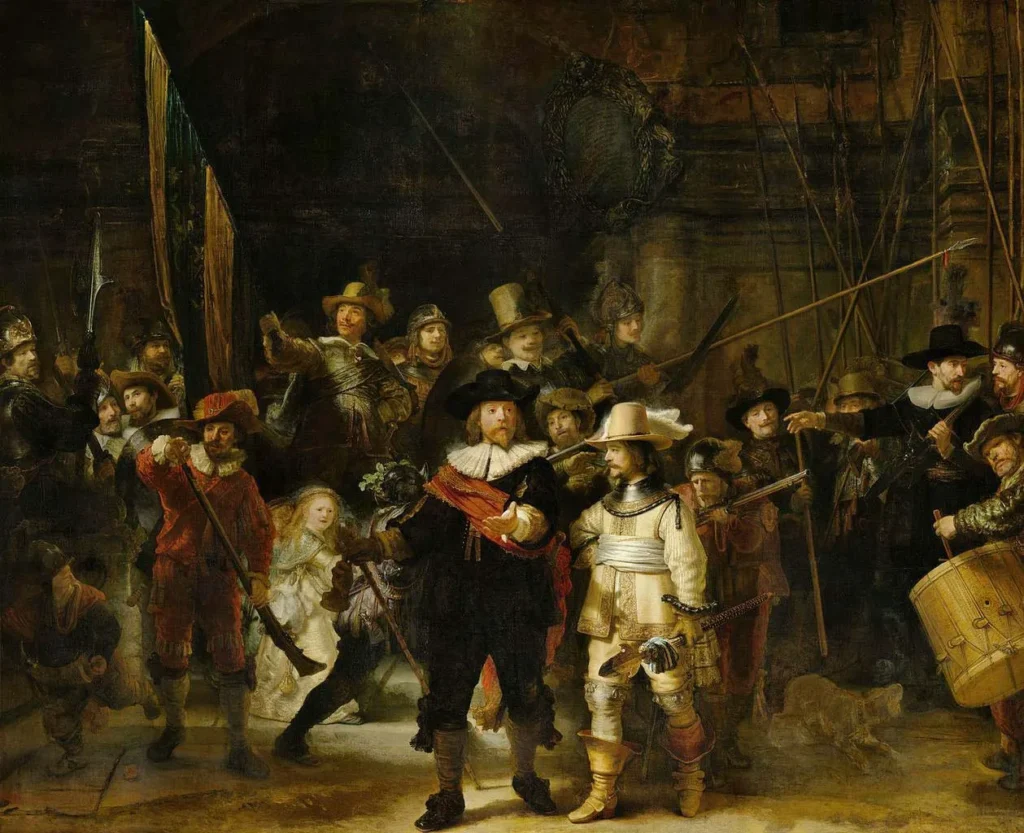
The Nightwatch by Rembrandt 1642
The Baroque is a style of architecture, painting, sculpture, and other arts that flourished in Europe from the early 17th century until the 1740s and was heavily influenced by the Roman Catholic Church which supported religious aspects and themes in their painting.
Baroque style is characterized by clear detail used to produce drama, use of rich, deep colors contrasted against dark backgrounds exuberance, and grandeur in sculpture, painting, architecture, literature, dance, and music. Artists and architects favored warm colors contrasted against ornate accents of gold. The use of the chiaroscuro technique is a well-known trait of Baroque art.
Some of the famous artists associated with this style of art are Peter Paul Rubens, Diego Velázquez, Nicolas Poussin, Caravaggio, Gian Lorenzo Bernini
3. Rococo Art
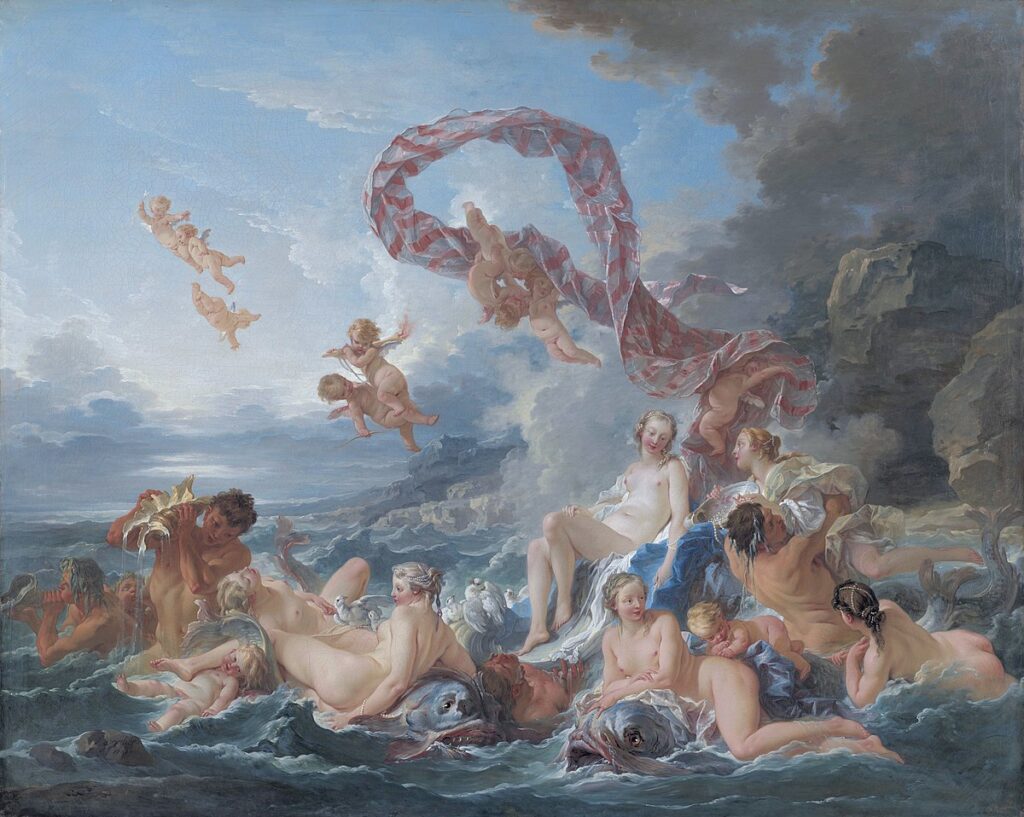
The Triumph of Venus by François Boucher,1740
The word “rococo” derives from rocaille, which is French for rubble or rock. It originated in the early 18th century in Paris and began as an interior design style favored by the urban upper class which later branched out to the decorative arts, painting, architecture, and sculpture. Rococo art was considered lighter, frivolous, playful, and more feminine. Some of the famous rococo artists are Jean-Antoine Watteau,François Boucher, Jean-Honoré Fragonard to name a few.
4. Impressionism
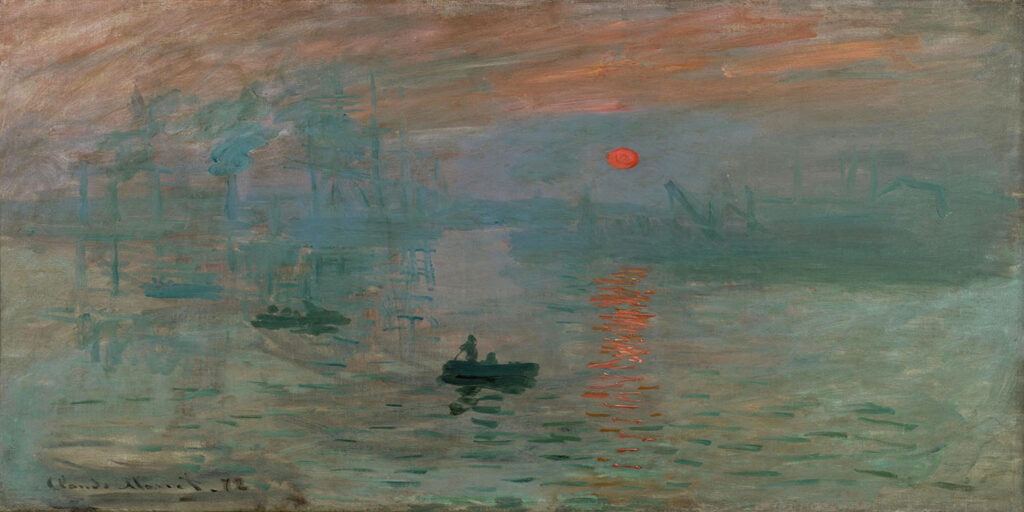
Sunrise by Claude Monet ,1872
Impressionism is a famous art movement that started in France during the 19th and early 20th century by a group of Paris-based artists who decided to rebel against the established art critics and form a new style of painting all their own.
Impressionists used bright colors and bold brushstrokes often avoided the clarity of form. Impressionists worked mostly outdoors to capture the impression of everyday life and capture the transient effects of sunlight and weather by painting outdoors, en Plein air.
Before Impressionism, most paintings were created in studios rather than outdoors. Though initially, the focus was mostly on landscape later on artists like Renoir turned towards female figure paintings.
Great Artists renowned for Impressionist paintings are Claude Monet, Pierre Auguste Renoir, Camille Pissarro, Alfred Sisley, Berthe Morisot, Armand Guillaumin, and Frédéric Bazille, who worked together, influenced each other, and put their own exhibitions.
5. Pointillism

A Sunday Afternoon on the Island of La Grande Jatte,1884 to 1886
Pointillism is a painting technique pioneered by French artists Georges Seurat and Paul Signac in 1886. This type of art is also known as ‘stippling art’ or ‘dot art’. This is a process where small strokes or hundreds of dots in different colors are dabbed to a surface so that from a distance they visually blend together to create an image. This creates an optical effect where the viewer needs to take a step back in order to see the emergence of work as a whole.
The further you are from the painting, the more whole the painting appears.
Other famous artists known for Pointillism are Paul Signac, Henri-Edmond Cross, Charles Angrand, Albert Dubois-Pillet to name a few.
6. Art Nouveau
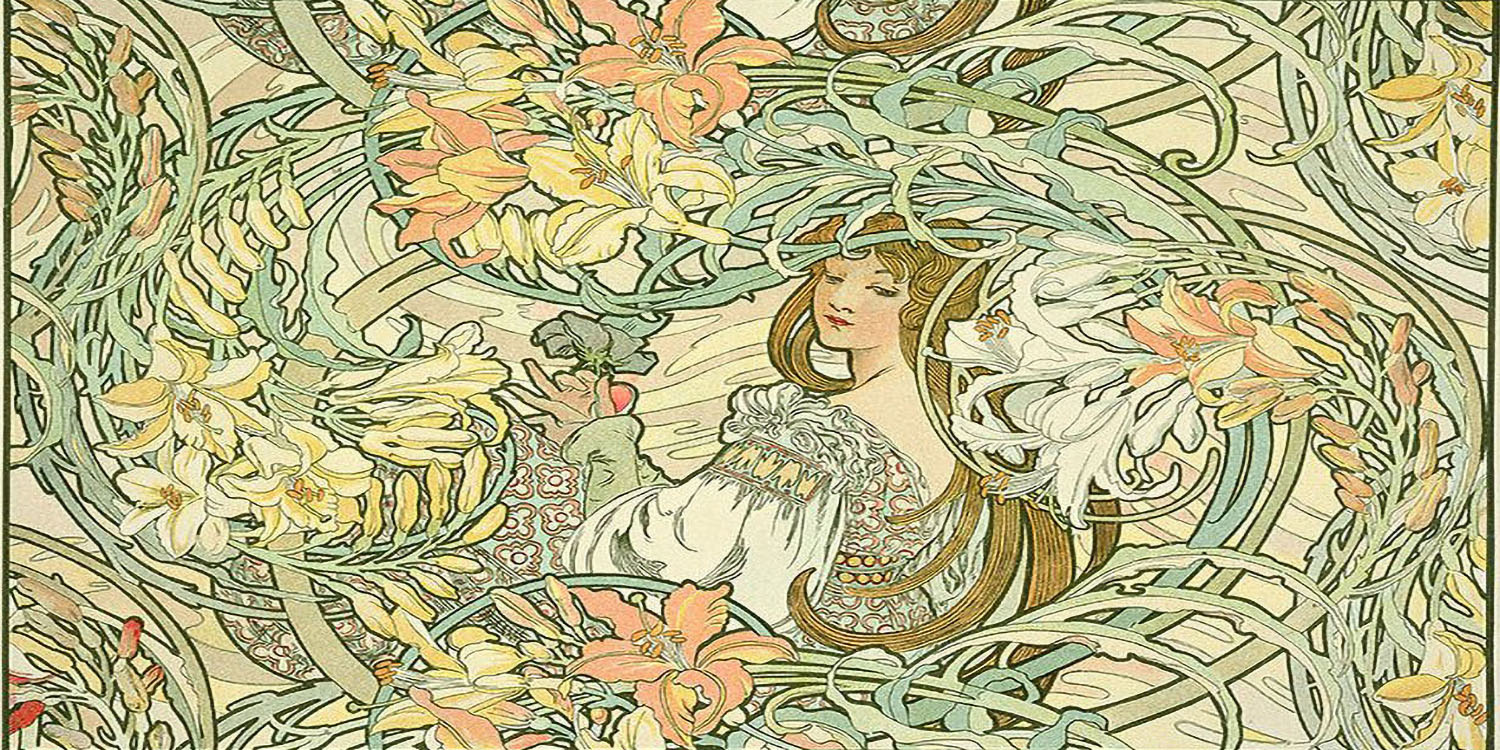
Language of Flowers by Alphonse Mucha 1900
Art Nouveau is an artistic style, which takes its name from the French, literally means “new art”. Art Nouveau is known in different languages by different names: Jugendstil in German, Stile Liberty in Italian, Modernisme català in Catalan.
It is an art that flourished between about 1890 and 1910 throughout Europe and the United States but was short-lived. Characteristics of this style are the use of organic shapes like delicate tendrils, flowers, leaves, insect wings, other delicate natural objects, and curving lines that encompass many forms of art including paintings, glassware, furniture, and architecture.
Some of the most famous artists of this art were Aubrey Beardsley, Gustav Klimt, Alphonse Mucha, Henri de Toulouse-Lautrec, to name a few.
7. Cubism

Les Demoiselles d’Avignon by Pablo Picasso, 1907
Cubism is one of the most influential paintings of the 20th century. It was a new approach invented around 1907–08 by artists Pablo Picasso and Georges Braque. Cubism derived its name from the remarks that were made by the critic Louis Vauxcelles, who described Braque’s 1908 work Houses at L’Estaque as being composed of cubes.
Their aim was to develop a new way of seeing art that reflected the modern age. The idea of cubism was to bring multiple perspectives of a subject in the same picture on a flat canvas in a greater context. They rejected the inherited concept that art should imitate nature, or that artists should adopt the traditional techniques of perspective, modeling, and foreshortening.
Instead of depicting objects from a single viewpoint, the artist depicts the subject from a multitude of viewpoints to represent the subject in a greater context. The artist reduced and fractured objects into geometric forms, and then realigned these within a shallow, relief-like space.
Famous artists associated with this style of art are Pablo Picasso, Georges Braque, Juan Gris, Fernand Léger.
8. Fauvism
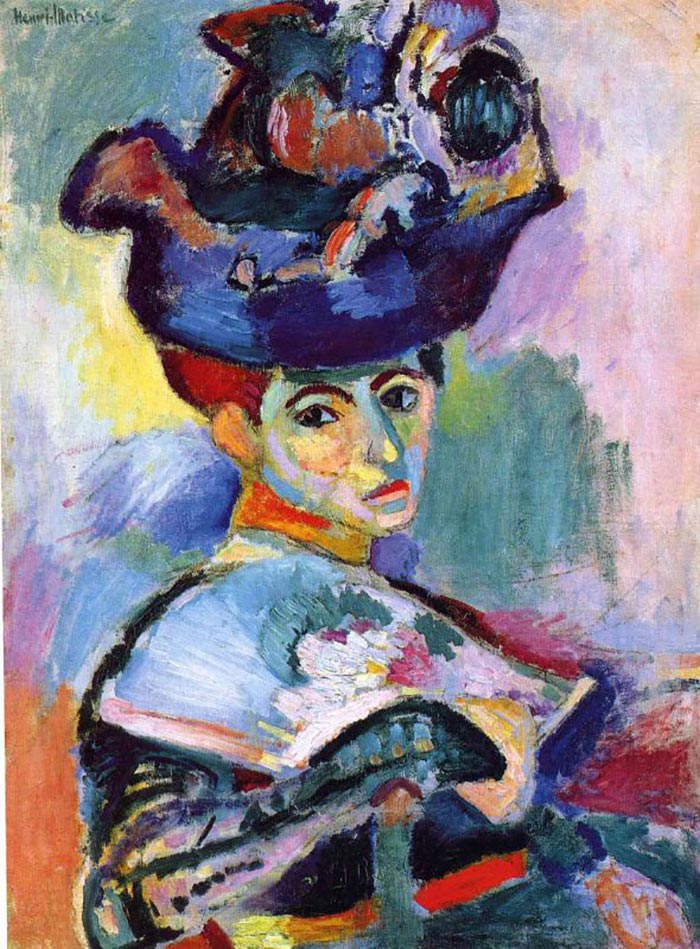
Woman with a Hat (Femme au chapeau), 1905 by Henri Matisse
Fauvism is an art movement that flourished in France and was established towards the beginning of the 20th century. Fauvism was inspired by post-impressionist artists such as Vincent Van Gogh, Paul Cezanne, and Paul Gauguin.
The two main artists related to Fauvism were Henri Matisse and André Derain. Other than them there were other important fauvist artists include Georges Braque, Raoul Dufy, Georges Rouault, and Maurice de Vlaminck. They were named les Fauves (‘the wild beasts’), a word coined by the critic Louis Vauxcelles when he saw the work of Henri Matisse and Andre Derain in an exhibition, the salon d’automne in Paris, in 1905.
Characteristics of fauvism are the use of bold colors, strong brushwork, and non-naturalistic depictions in the paintings. The colors are intensified, pure, and straight from the tube. The fauvists were interested in the scientific color theories developed in the nineteenth century
9. Dadaism
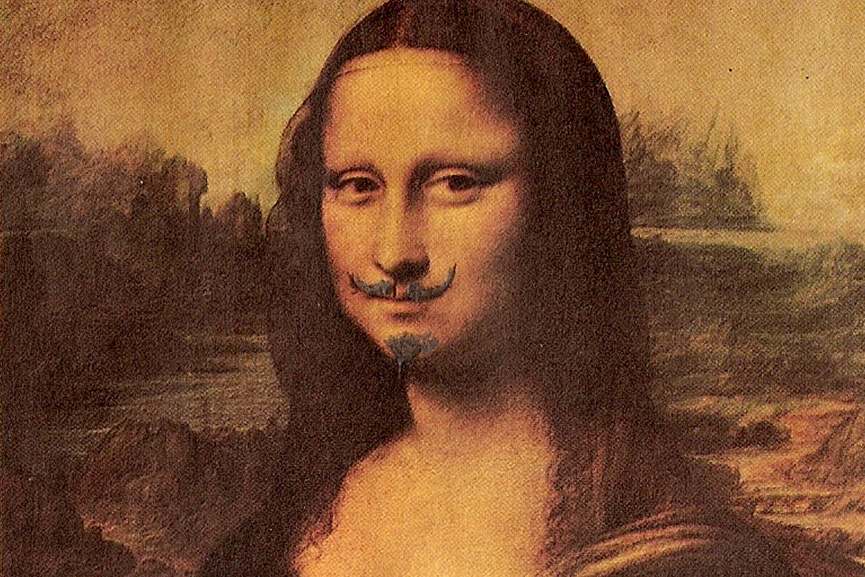
Marcel Duchamp – LHOOQ, 1919,
Dada was an art movement formed during the First World War in Zurich in a negative reaction to the horrors and misfortune of the war.
The word ‘Dada’ means ‘hobby horse’ in French.” Following the war’s tragedies, Dada artists set out to demolish traditional art values and question everything.
The art, poetry, and performance of dada artists are frequently sarcastic and absurd in nature.
Artists associated with this style of art are Francis Picabia, Hugo Ball, Hans Arp, Tristan Tzara.
10. De Stijl
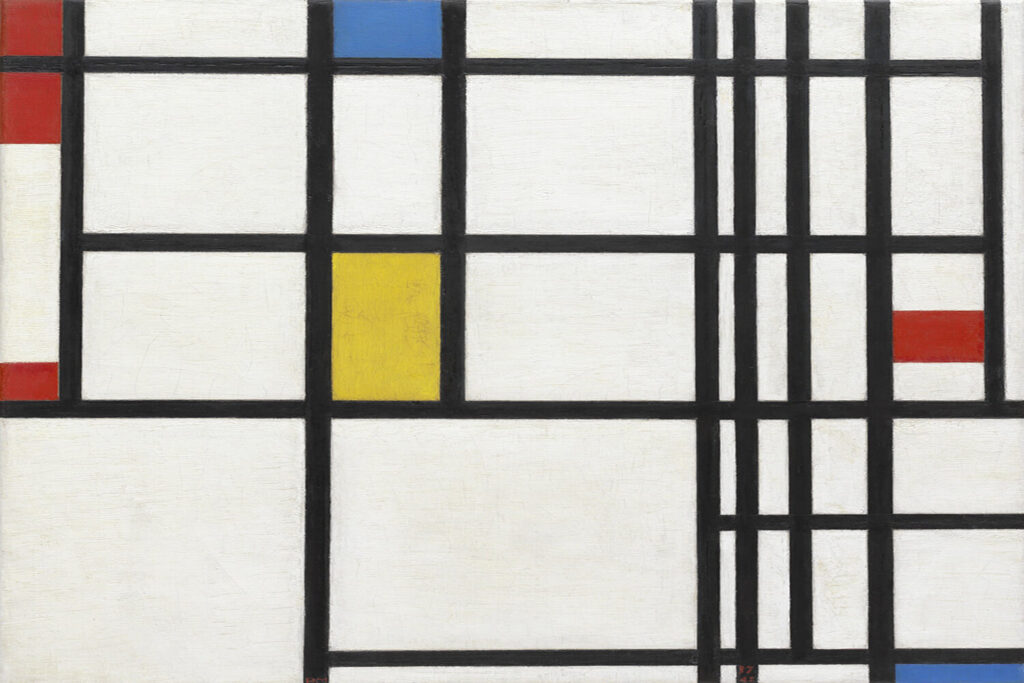
Piet Mondrian – Composition in Red, Blue, and Yellow, 1937-42
De Stijl, meaning ‘Style’ is also known as Neoplasticism, was a modern art movement developed in the Netherlands in the early twentieth century. De Stijl was founded by Piet Mondrian and Theo van Doesburg in 1917 and lasted till 1931. This is based upon strict ideas of vertical and horizontal geometry and the use of primary colors. The principles of De Stijl were applied not only to art but also seen in design and architecture which can be seen in works designed by the architect Gerrit Rietveld.
11. Surrealism
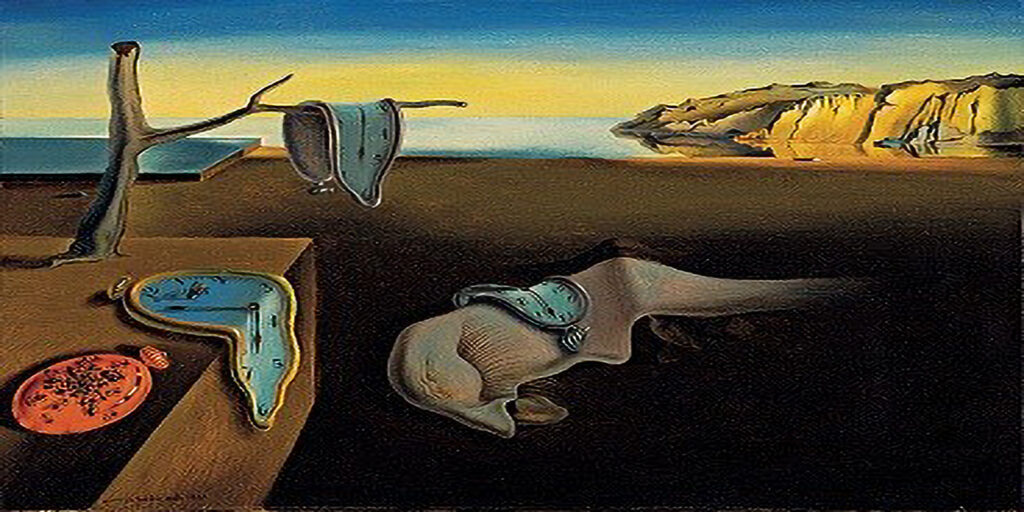
The Persistence of Memory – Salvador Dali,1931
Surrealism was a visual and literary trend that flourished in Europe after world war 1 and was deeply influenced by dada. It was a movement founded by French poet, André Breton in the early 20th century
Breton stated in his Surrealist Manifesto of 1924 that the Surrealist movement’s principal goal was to “resolve the once incompatible circumstances of dream and reality into absolute reality, a super-reality.”
The main idea of surrealistic art was to tap into the internal thoughts of a person by delving into the subconscious mind. The artwork was frequently illogical, as it was attempting to reflect a dream or odd thoughts.
Famous artists known for surrealist paintings are Andre Breton , Salvador Dali, Jean Arp, Max Ernst, Andre Masson to name a few
12. Art Deco

Tamara de Lempicka “Young Lady with Gloves, 1930”
Art Deco short for Arts Décoratif first appeared in France in the 1920’s is a design movement inspired by industrialization and technical progress. Art Deco takes its name from 1925 Exposition Internationale des Arts Décoratifs et Industriels Modernes.
One of the main characteristics of Art Deco is the use of bold geometrical patterns in symmetrical arrangements, vibrant, contrasting colors. The geometric aspect of this form of art can be seen in furniture, ornamental arts, and fashion, architecture, filmography, and product design.
Art Deco is also often compared to Art Nouveau as its forerunner. Tamara de Lempicka, a female polish painter was one of the most influential artists in the art deco period. Some of the other artists involved in this type of art are Erté, René Lalique, Le Corbusier,Léon Bakst, Émile-Jacques Ruhlmann,Sonia Delaunay.
13. Abstract expressionism

Lavender Mist by Jackson Pollock 1950
Abstract expressionism was an American, post–World War II art movement. The major artists associated with this movement are Jackson Pollock, Willem de Kooning, Robert Motherwell, Franz Kline, and Mark Rothko, among others.
According to MoMA,Abstract Expressionism is a term applied to a movement in American painting that flourished in New York City after World War II, sometimes referred to as the New York School or, more narrowly, as action painting.
What is Action Painting?
Action painting is a style of painting in which paint is spontaneously dribbled, splashed, or smeared onto the canvas, rather than carefully applied with a brush. This is called gestural abstraction.
In most of the cases the paintings are done on large canvases, placed on the floor to break away the traditional processes.
The name “action-painting” was first used in 1952 by the American critic Harold Rosenberg (1906-78). This type of art was influenced by surrealism in order to give free artistic expression to the subconscious mind.
Famous artists associated with abstract expressionism are Jackson Pollock, Joan Mitchell, Mark Rothko, Willem de Kooning
14. Conceptual art

Marcel Duchamp’s 1917 sculpture Fountain.
Conceptual art emerged as an art movement in the 1960s and the term usually refers to art made from the mid-1960s to the mid-1970s. It is the art for which the idea (or concept) behind the work is more important than the finished art object. Duchamp is recognized as a pioneer of conceptualism. By submitting a urinal as a sculpture for an exhibition in 1917, which was signed and dated with the appellation “R. Mutt, 1917,” and titled Fountain, he established the ready-made approach.
“Readymade” is the term used when the normal everyday objects are presented as art by the artists. The term readymade was used by the artist to describe the work of art made from the manufactured objects instead of handmade. His other painting which was famous is Nude Descending a Staircase, No. 2 (1912).
Famous artists associated with this style of art are Marcel duchamps, Joseph Kosuth, Walter de Maria, John Baldessari, Sol LeWitt, Joseph Beuys.
15. Minimalism
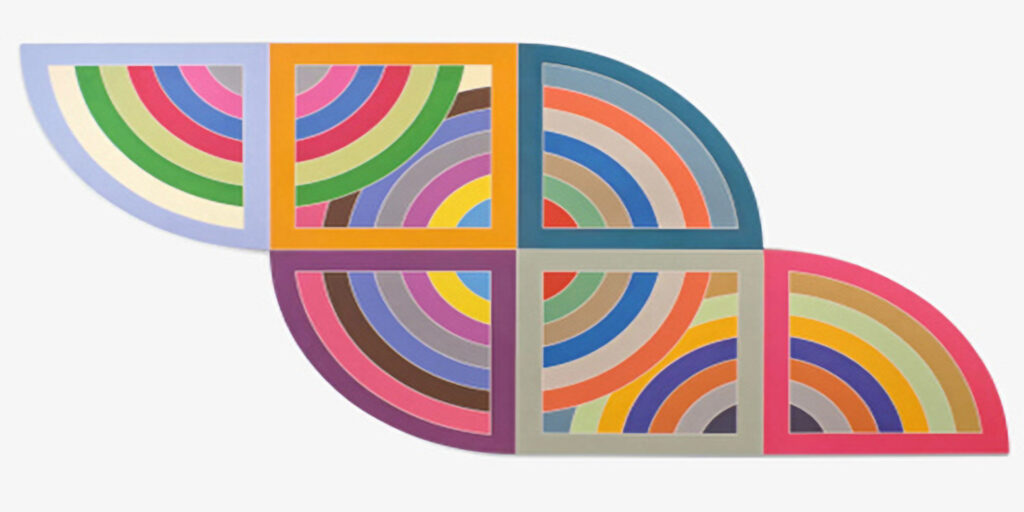
Frank Stella Harran II, 1967
Minimalist art is also known as ABC art, is a movement started in the USA in the 1960s and characterized by simple forms and shapes of artworks with simple arrangements, clean lines, and minimal color.
Minimalist artists detracted from the essence of art itself. Instead of focusing on the artist’s creativity or self-expression, this art style emphasizes beauty, and structure.
“What you see is what you see.” “Less is more.” quote by Frank Stella, a great minimalist American artist.“
Famous artists of this style of art are Frank Stella, Tony Smith, Carl Andre, Richard Serra, Dan Flavin.
Conclusion:
Art has always changed over time, influencing how we see and interpret the world.
You may love the soft, flowing style of Art Nouveau or the bold shapes of Cubism, but each movement has its own story and unique charm. Which one speaks to you the most? Share your thoughts in the comments!
